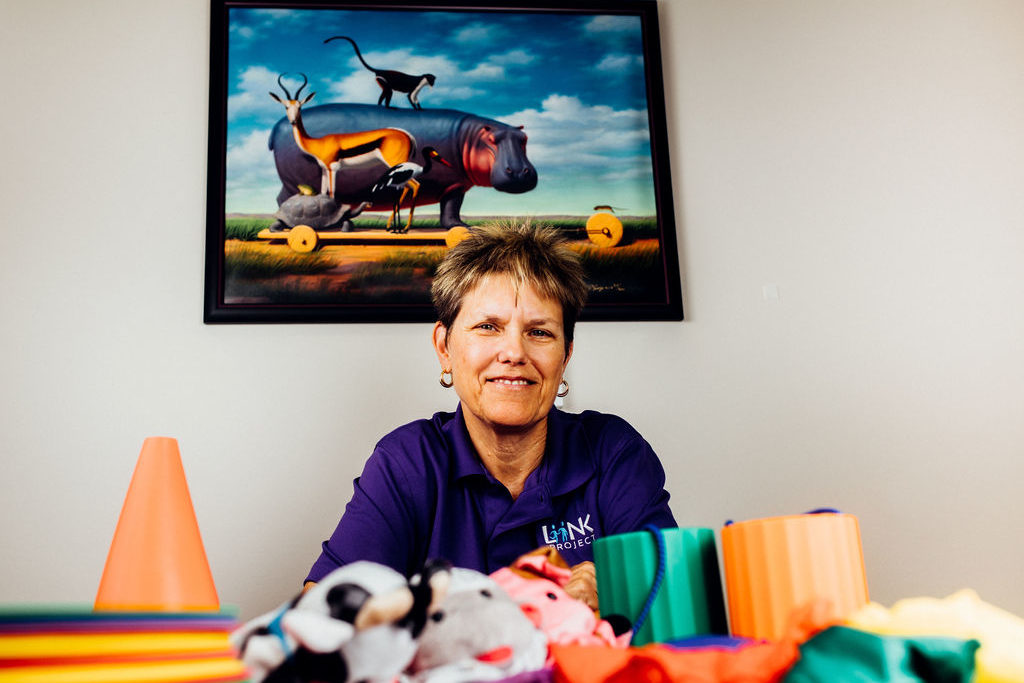It’s 9:15 on a chilly morning in mid-February, and dozens of students from Little Elm’s Cesar E. Chavez Elementary School have formed a line down the hall. They’re standing about as still and straight as you can expect from this many fourth graders. They are Latino, white, and black. Most are dressed in light jackets or pullovers; one girl has on a pair of neon pink earmuffs. Two teachers watch over them. One child holds the door open and the rest head outside.
Suddenly boisterous and energized, the kids dash for either a playground or a small courtyard. In the latter, they congregate in social groups and chase each around playing tag. A whistle sounds. The children drop to a knee and listen to a teacher make a short announcement. When she finishes, the whistle sounds again and play resumes. Fifteen minutes later, the kids are back in line, shambling into the school. They hang their jackets on hooks and sink cross-legged onto the classroom carpets. They quietly direct their attention to the teacher, just in time for the next lesson.
This will happen three more times today. The Little Elm school district, which includes Chavez Elementary, is one of eight districts (seven in Texas, one in Oklahoma) giving students a full hour of recess every day. These added breaks are part of a new program called LiiNK (Let’s Inspire Innovation n’ Kids), which was created by Dr. Debbie Rhea of Texas Christian University. LiiNK is built on two main tenets: provide kids lots of unstructured recess time—four 15-minute breaks daily in addition to lunch and P.E.—and include a character development component in the curriculum.
While LiiNK could be viewed as radical—state and local education board members knew of no other program that prescribed so much recess—most educators I spoke to applauded Rhea for trying it. Daniel Gallagher, the Little Elm superintendent, said the district adopted LiiNK because the recess portion was “research-based.” He saw the program as a way to “enhance,” not upend, the learning experience. Dustin Marshall, a Dallas ISD trustee, hadn’t heard of LiiNK, but after a summary said he viewed it as a counterweight to increased testing. Dallas ISD is moving in a similar direction after some Dallas schools eliminated recess altogether to make a run at higher test scores.

Standardized tests, particularly those mandated by the federal government and the state, such as STAAR (State of Texas Assessment of Academic Readiness), place intense pressure upon students, teachers, and parents. Adopting LiiNK requires eliminating one hour of instructional time each day. That is a high risk for educators who believe more instruction leads to higher test scores. But research shows vast benefits to providing kids recess.
Pat Hardy, a Fort Worth-based member of the Texas Board of Education, has read the research and is supportive of schools incorporating more recess if it proves beneficial. She feels LiiNK is a bridge too far, however, prescribing more than she thinks feasible.
“You can’t add anything else to the school day,” she said. (Hardy is a “strong believer” in STAAR and thinks the amount of standardized testing in Texas is “about right,” despite a recent study finding that the writing portion of STAAR was not age appropriate.)
In districts that have adopted LiiNK, the teachers, administrators, and parents raved about its effects on students. The additional recess, they said, helped their kids focus better, misbehave less, and even lose weight. There were benefits for teachers, too. Sandra Hill, a third grade teacher at Chavez with 18 years experience, said better behaved kids improved her morale. She described the difference between teaching LiiNK kids and the kids at her previous schools as “night and day.”
“This year was hands down, the easiest year I’ve had with behavior,” she told me.
Cindy Griggs, a kindergarten teacher at Eagle Mountain Elementary, a LiiNK school in Fort Worth, described a similar change. Recalling her students’ behavior before LiiNK was implemented four years ago, she said, “They were always antsy, messing with the name tags on their desks, poking each other, rolling around on the floor.” But now with the extra recess: “They’re able to get all that energy out. Coming in, they’ll just be sitting on the carpet zoned in and engaged for 45 minutes.”
The data Rhea made available on the LiiNK website support the claim that LiiNK kids are better behaved. Observations of kindergarten and first grade students in three Texas public school districts—Little Elm, Eagle Mountain-Saginaw, and Irving—found that LiiNK students displayed significantly fewer “off-task behaviors” (fidgeting, moving around the classroom when not instructed to do so), and significantly higher “appropriate behaviors” (staying on lesson, doing what the teacher instructed). Listening skills and “pro-social behaviors” (showing respect for adults, honesty, empathy, anti-bullying) were also higher among the LiiNK kids. And over a three-year period that tracked body weight between LiiNK and non-LiiNK groups, the non-LiiNK group was “significantly higher in BMI” by the end of the study.
Other studies bolster Rhea’s data. A 2013 policy statement from the American Academy of Pediatrics titled “The Crucial Role of Recess in School” cites a wide range of research showing a slew of benefits to children in the areas of “Cognitive/Academics,” “Social and Emotional,” and “Physical.”
Such studies aside, LiiNK bucks the trend of American K-12 education in recent years in which the focus on testing has led to wide cuts in recess, physical education, and the arts. Can a program like LiiNK succeed in light of the trend toward testing? Are LiiNK students falling behind academically because of the reduced instructional time? What, if any, are the implications for ADHD diagnoses?

Rhea is a fit, energetic woman in her fifties with close-cropped graying hair and small, rectangular glasses. A former P.E. teacher and track coach, she is now the associate dean of Health Sciences and Research at TCU’s Harris College. She is the author of 12 books and 40 articles on the connection between physical activity, motivation, and behavior. She says she created LiiNK after flying to Finland to study its education system. Her most recent book, Wrong Turns, Right Moves in Education, compares the Finnish system with the American one.
“Finland had gone from an F to an A in a decade, so I needed to see what they were doing over there,” she said, referring to Finnish kids’ dramatic improvement in academics and behavior. “After talking with Saani Grahn-Laasonen, the Minister of Education, it became clear that these two pieces—the recess piece and the character development piece—were what the U.S. could do first to make a huge difference.”
LiiNK works like this. For the first 15 minutes of the school day, children are taught lessons from a book called Positive Action. These lessons focus on empathy, self-confidence, self-esteem, self-regulation, honesty, and trust. Lessons around these concepts are often woven into the “content time” throughout the day. For example, a historical figure such as Helen Keller could be used to teach empathy. Students are encouraged to practice the concepts at recess, such as showing kindness by reaching out to a student playing alone.
At recess, organized sports are not allowed. Rhea said this rule is designed to prevent heated competition that could result in fighting. Sports-like games that are spontaneously created and unstructured, however, are okay. Hill used the example of students who found a glove, rolled it up, dipped it in water, and played catch. That was allowed to continue. Another group kicked a stone around in a game they called “rock soccer.” If either of these had become too competitive or organized, the kids would have been “dispersed.”
One of the goals during recess, said Rhea, is to minimize teacher involvement. Rhea aims to encourage creativity and allow kids to resolve their own disagreements. Indeed, one parent said her only criticism of LiiNK was that the recesses were less supervised than she would have liked. “What we’re trying to do with LiiNK is to teach to the whole child,” Rhea said. “By letting kids be kids we help them build resiliency, creativity, and independence.”
At the recesses, many children stuck to the slides, sandboxes, and monkey bars, while others were more imaginative. One group dug up a cluster of rocks they pretended was buried treasure. Others built a volcano. Emily Williams, a fourth grader at Eagle Mountain, said that in addition to practicing gymnastics and building sand castles, she liked to play a tag game called “Infection” that imagines a global plague. Williams, a vivacious red-head, insisted the extra breaks were crucial because she’s a “fidgety person” and they helped her burn off steam.
“I like getting my wiggles out,” she said, giggling.
At the heart of LiiNK is Rhea’s belief that contemporary American children are less respectful and more coddled than kids of previous generations. While there is scant evidence to support this, and it’s been said of many generations, anecdotal evidence can be persuasive. Hill, however, says her story is proof of its effectiveness.
“I was one of those teachers who was being hit and having things thrown at me. My room was torn up. It was really ugly. When I would try to get to the phone for help, my shirt would be stretched to the wall from kids pulling on it.” This year, however—her first full year in the LiiNK program—Hill has not had to call the principal’s office a single time. She estimates there has been a 75 percent drop in the class time she now spends correcting bad behavior.
“The shift is very evident,” Rhea insisted. “Not just in Texas but in schools across the nation, kids have become much less respectful of themselves, their peers, and their teachers.” When asked how she could make such a sweeping claim, she cited more anecdotal evidence, but also pointed to the decision by many states to recommend or require that schools implement a “social-emotional” component to the curriculum. Texas is one of those states. “The states are saying social-emotional instruction must be incorporated because of the increased anger, the shootings, the disrespect, the truancy, you name it.”
While the data on LiiNK’s behavioral effects are convincing, the data on academics are not. Rhea is awaiting additional results, but the data so far reveal no significant academic difference between LiiNK students and non-LiiNK—from kindergarten through second grade, that is. Rhea views this “a win,” however, because LiiNK schools replace one hour of classroom time daily, and yet the children are keeping up academically. Rhea is encouraged by early data suggesting there may be an academic jump starting in third grade. She is reluctant to make this data public yet because of the small sample size, but she has received more promising evidence that she hopes will validate the jump.

Elizabeth Miller, Chavez Elementary’s principal, escorted Rhea and I through the school. She said her third graders had shown “incredible growth” on the MAP (Measures of Academic Progress) assessment since LiiNK was implemented a year ago. (“I’m so excited!” Rhea exclaimed.) Miller chalked it up to reduced “correctional time.” “That hour of the day that we used to spend correcting negatives—‘sit down, get started, get busy, stay with me’—we’re now filling with positives,” she said.
Rhea is working on an article that will examine in further depth the effect LiiNK has on kids with ADHD, as well. One recent study suggested diagnoses can be unnervingly subjective. The study, published in The New England Journal of Medicine last November, found that kids born in August—typically kids younger than their peers in the same grade—were more likely to be diagnosed with ADHD. The study suggested that the “immaturity” of these younger children and their resulting inattentive behavior was being misdiagnosed as ADHD.
Perhaps something similar was happening with high-energy kids: Were more physically expressive, “fidgety” children also being misdiagnosed? If so, could LiiNK expose these misdiagnoses by eliminating the symptoms through more unstructured recess?
Rhea would not make a definitive claim about LiiNK’s effects on ADHD. Instead, she differentiated between true ADHD and “ADHD-like” symptoms. “I often talk about the difference between ADHD and ADHD-like behavior,” she said. “What we’re finding with LiiNK is that kids who are ADHD-like are disappearing. Kids with true ADHD are still there, but not to the same extent, meaning they are able to focus better in class. It probably doesn’t matter how many breaks ADHD kids get because they need to move all the time.”
The matter isn’t quite settled. Two parents with children who had been diagnosed with ADHD while in LiiNK or before starting LiiNK said they believed the program helped keep their children’s symptoms under control (the kids continued to take medication, however). And Rhea said some teachers, who wished to remain anonymous, were recommending fewer LiiNK kids get tested for ADHD.
Whatever her research finds, if the data on LiiNK continue to show benefits to classroom focus, “pro-social” behaviors, and BMI; and if enough data emerge that reveal academic benefits as well, LiiNK would seem to offer a valuable alternative to the “teach to the test” education model that has swept the U.S. in recent years.
However, despite showing promise for classroom focus, “pro-social” behaviors, and BMI, just 28 schools had adopted LiiNK so far. It is not in Dallas ISD at all.
“The two objectives you mentioned are areas we spend a great deal of time thinking about,” said Marshall, the Dallas trustee. He added that the DISD board recently mandated recess time for elementary students and increased the focus on social-emotional learning. Dallas elementary schools are now required to provide at least 30 minutes of recess time daily. “Some of the elementary school principals were taking the academic focus so far that they were literally providing no recess. The data is clear that children, especially young children, need to be physical and take brain breaks to be at their best.”
As for social-emotional instruction, DISD has taken two approaches. First, it banned out-of-school suspension for kids in second grade and younger. This was done because of the extreme poverty many district kids are mired in (Dallas has the third highest childhood poverty rate in the nation) and because African American boys were being suspended at disproportionately high rates. When I asked Marshall whether, like Rhea, he had detected a general decline in student behavior over the years, he couldn’t be sure, but said it would be understandable given the “toxic stress” that extreme poverty creates in children. The district has some 3,500 homeless kids.
DISD’s other approach to social-emotional instruction, Marshall said, was to develop of “a menu of programs” that target social-emotional health. One example is “restorative discipline” in which kids are provided a safe environment—“circle time”—to practice conflict resolution and discuss emotional needs. While each school principal may decide which program is best for their campus, they must implement at least one approved program. “LiiNK probably has a lot of overlap with our curriculum,” Marshall said. While conceding that DISD’s programs don’t go as far, he added that “both curriculums are aimed at improving student behavior and creating well-rounded kids.”
Would he consider adopting LiiNK? “I don’t think it would be a stretch for the district or the board to consider a program like that if it has shown proven effectiveness.”
Back at Chavez Elementary, the girl in the pink earmuffs waved goodbye, strolled past her classmate holding the door, and disappeared into the school. Later, Principal Miller was waiting in a conference room to chat about what I’d observed.
“Test scores don’t tell you everything you need to know about a child,” she said. “I hope people can understand that. In this age of accountability and testing, I think we’ve forgotten that we’re dealing with these little kids with their little hearts, and they need to be nurtured too.”




